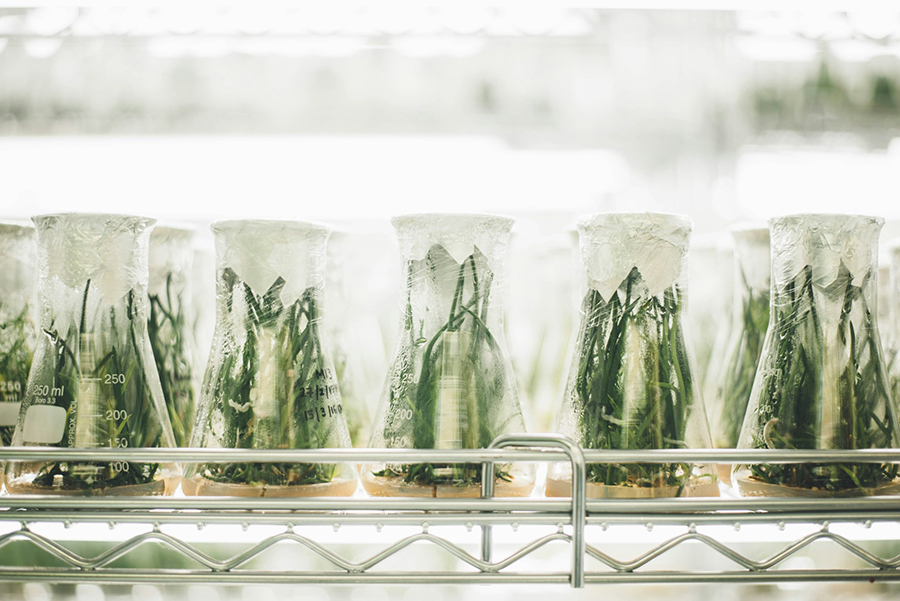A strong bioeconomy can help us mitigate climate change, increase sustainable production, and expand manufacturing of cutting-edge therapies while boosting U.S. technological capabilities and providing new jobs.
President Biden’s Sept. 12, 2022, executive order was designed to achieve this kind of bioeconomy. The order is based on a broad whole-of-government approach with coordinated actions from various agencies and offices.
The White House Office of Science and Technology Policy followed up on March 22, 2023, with the Bold Goals for U.S. Biotechnology and Biomanufacturing, to describe what the order could achieve.
One year later, the sustainable development targets described in the “Bold Goals” are possible through appropriate policy, regulatory coordination, and public-private partnerships, according to Beth Ellikidis, VP for Agriculture & Environment at the Biotechnology Innovation Organization (BIO).
“BIO and our member companies are committed to working with the Office of Science and Technology Policy and the administration to deliver pioneering technology breakthroughs that improve the health, environment, and prosperity of our nation and the world,” says Ellikidis.
What are the ‘bold goals’ for the bioeconomy?
Some of the U.S. government’s “bold goals” include:
- Climate: In 20 years, demonstrate and deploy routes to convert biobased feedstocks into recyclable-by-design polymers. These can displace more than 90% of today’s plastics and other commercial polymers at scale.
- Food and Agriculture: By 2030, reduce methane emissions from agriculture. This will support the U.S. goal of reducing greenhouse gas emissions by 50% and the global goal of reducing methane emissions by 30%.
- Supply Chain: In 20 years, produce at least 30% of the U.S. chemical demand via sustainable and cost-effective biomanufacturing pathways.
- Health: In 20 years, increase the manufacturing scale of cell-based therapies. This will help expand access, decrease health inequities, and decrease the manufacturing cost of cell-based therapies 10-fold.
- Cross-Cutting Advances: In five years, sequence the genomes of 1 million microbial species and understand the function of at least 80% of the newly discovered genes.
What’s been done so far
The Bioeconomy Executive Order lays out roughly 40 different actions from various agencies. As of the beginning of 2024, the government has developed important strategy documents and tools.
According to an assessment by the Federation of American Scientists (FAS), the main activities include producing publications offering a strategy and a framework for encouraging the bioeconomy.
The FAS has a live tracker for the Bioeconomy Executive Order, which shows that many activities still need to be undertaken.
What needs to be done
BIO’S Ellikidis maintains that “biotechnology can address global health crises, environmental stewardship, and food security in a growing world,” and achieve the “Bold Goals.” However, enabling such positive developments requires:
- Leading with science and U.S. innovation.
- Adopting more sustainable technologies.
- Streamlining and expediting regulatory pathways for breakthrough technology.
To this end, BIO advocates the following government actions:
- Implementing the actions and objectives laid out in the Bioeconomy Executive Order, with the ambition of achieving the “Bold Goals for U.S. Biotechnology and Biomanufacturing.”
- Facilitating interagency coordination between the U.S. Department of Agriculture (USDA), the U.S. Environmental Protection Agency (EPA), and the U.S. Food and Drug Administration (FDA).
- Encouraging government officials to catalyze public-private partnerships to further accelerate gains made by biotechnology.
“Biotechnology addresses some of society’s greatest challenges. Implementing the administration’s Bold Goals would promote continued innovation and incentivize even more progress in the bioeconomy,” says Ellikidis. “We urge action to operationalize those goals.”




